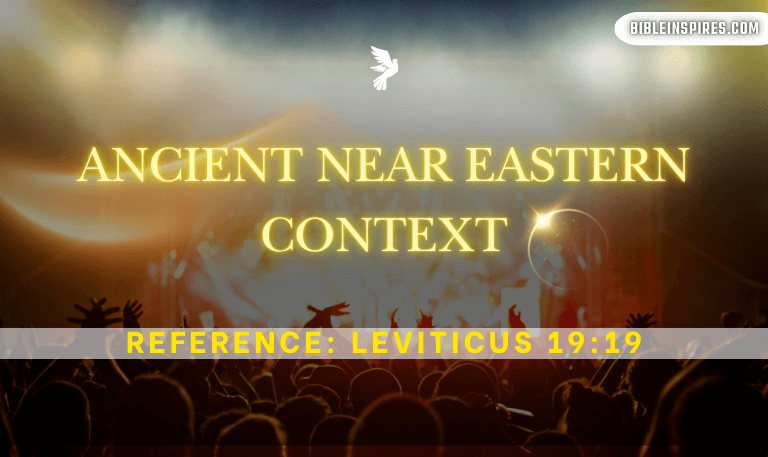The Bible has been a cornerstone of faith, scholarly inquiry, and even controversy for centuries. Yet, a curious question continues to arise: Why are there weird verses in Bible? From miraculous talking animals to perplexing laws and seemingly contradictory passages, many readers wonder about the origins and meanings behind these verses. This article explores that question in depth, combining historical context, literary analysis, theological insights, and expert commentary to provide you with a comprehensive understanding.
Defining “Weird” in Biblical Context
The term “weird” is subjective—what seems strange to modern readers may have been perfectly ordinary in its original context. In biblical studies, “weird” verses often include passages that:
Appear to contradict modern morals or logic.
Contain supernatural or miraculous events (e.g., a talking donkey).
Outline laws and customs that conflict with contemporary norms.
Use poetic or symbolic language that can be misunderstood when taken literally.
Common Perceptions of Weird Verses
Apparent Contradictions: Verses that seem to oppose each other, often due to context being left out.
Cultural Oddities: Laws or practices specific to an ancient culture, such as prohibitions against mixing fabrics or detailed purity laws.
Miraculous or Supernatural Claims: Events that defy natural explanation, requiring a willingness to suspend disbelief or understand their allegorical meaning.
Understanding these factors allows us to approach these passages with historical curiosity rather than immediate dismissal.
Read ALso: Bible Verses That Sound Made Up
Historical and Cultural Context of the Bible
An essential step in interpreting any biblical verse is to explore its historical and cultural context. Many verses that strike modern readers as “weird” were, at the time of their writing, embedded in a cultural and historical setting that provided them with meaning.
Ancient Near Eastern Context
Cultural Practices: Many Old Testament laws, like those found in Leviticus, were designed to set the Israelites apart from neighboring peoples. For instance, the commandment against wearing mixed fabrics was part of a broader purity code.
Societal Norms: Concepts of justice, honor, and community were different. Practices like “an eye for an eye” were meant to regulate retribution, not to encourage violence.
Religious Rituals: Many rituals and laws had symbolic meanings reflecting Israel’s covenant with God.
Illustration: Leviticus 19:19

“Keep my decrees. Do not mate different kinds of animals. Do not plant your field with two kinds of seed. Do not wear clothing woven of two kinds of material.”
At first glance, this may seem arbitrary or “weird.” However, within its ancient context, it was a directive meant to preserve the distinctiveness of the Israelite community, symbolizing purity and separation from pagan practices.
Translation and Language Nuances
Another layer that adds to the perception of weirdness in biblical texts is the challenge of translation. The Bible was originally written in languages that have no direct modern equivalents, and translators must bridge significant linguistic and cultural gaps.
Challenges in Translation
Multiple Meanings: Many Hebrew and Greek words have several meanings or connotations that can be lost or altered in translation.
Idiomatic Expressions: Phrases that made sense in ancient idiomatic expressions may appear confusing today.
Textual Variants: Over centuries, various manuscript traditions and translation choices have led to slight differences in how verses are rendered.
Case in Point: Proverbs 26:4-5
Proverbs 26:4: “Do not answer a fool according to his folly, or you yourself will be just like him.”
Proverbs 26:5: “Answer a fool according to his folly, or he will be wise in his own eyes.”
At first glance, these seem contradictory; however, they are not mutually exclusive. Instead, they provide wisdom on how to deal with folly depending on the context—a nuance that can be missed without understanding the language’s subtleties.
Read Also: Weird Bible Verses
Literary Genres and Styles in Scripture
The Bible encompasses several literary genres, each with its own style, purpose, and interpretative challenges. Recognizing the genre of a passage is crucial to deciphering its intended meaning.
Major Biblical Genres
Narrative: Stories about historical figures, events, and divine intervention.
Law Codes: Sets of rules and guidelines (e.g., Exodus, Leviticus).
Wisdom Literature: Reflections on life, morality, and human behavior (e.g., Proverbs, Ecclesiastes).
Poetry: Lyrical expressions of faith, lament, or praise (e.g., Psalms, Song of Solomon).
Prophecy: Messages delivered by prophets, often containing symbolic and hyperbolic language (e.g., Isaiah, Jeremiah).
Apocalyptic Literature: Visionary texts that use symbolic imagery to describe end-times (e.g., Daniel, Revelation).
Epistles: Letters containing doctrinal insights and pastoral advice (e.g., Paul’s letters).
Scholarly Interpretations and Hermeneutics
Scholars and theologians have long debated and analyzed difficult Bible verses using various hermeneutical methods. These methods help bridge the gap between ancient texts and modern readers, offering layers of interpretation that consider historical, cultural, and linguistic contexts.
Key Hermeneutical Approaches
Historical-Critical Method: This approach examines the historical context, sources, and cultural background of the biblical text. It is widely used to understand ancient laws and narratives.
Literary Criticism: Focuses on the genre, structure, and rhetorical devices used in scripture. It helps decode poetic and apocalyptic texts.
Theological Interpretation: Considers the passage’s role within the broader narrative of scripture and its implications for faith and practice.
Canonical Criticism: Looks at how difficult verses fit within the overall canon of Scripture and its theological message.
Examples of Perplexing Bible Verses
Let’s look at some specific examples of verses that often leave readers puzzled, and then explore scholarly interpretations that clarify their intended meanings.
Example 1: Balaam’s Talking Donkey (Numbers 22:28)
Verse: “Then the Lord opened the donkey’s mouth, and it said to Balaam, ‘What have I done to you to make you beat me these three times?'”
Analysis
Historical Context: In a time when animal speech was unheard of, this miracle challenged Balaam’s perception and served as a divine rebuke.
Symbolic Meaning: The event symbolizes that God can use even the most unexpected means to communicate His message.
Scholarly Insight: Scholars interpret this miracle as a demonstration of divine intervention where human expectations are upended by God’s power.
Read Also: Bible Stories About the Ocean
Example 2: Elisha and the Bears (2 Kings 2:23-24)

Verse: “From there Elisha went up to Bethel. As he was walking along the road, some boys came out of the town and jeered at him. ‘Get out of here, baldy!’ they said. Then he turned around, looked at them, and called down a curse on them in the name of the Lord. And then two female bears came out of the woods and mauled forty-two of the boys.”
Analysis
Cultural Context: In the ancient world, honor and respect for religious leaders were paramount. The mockery of a prophet was a serious offense.
Literary Device: The incident, though shocking, is steeped in symbolic language conveying the seriousness of disrespect towards divine authority.
Modern Reflection: Today’s readers may find such portrayals difficult, but understanding the cultural backdrop helps explain the severity of the curse in that context.
Example 3: Psalm 137:9
Verse: “Happy is the one who seizes your infants and dashes them against the rocks.”
Analysis
Genre Consideration: This verse falls under the category of a lament—a raw, emotional expression of grief and anger experienced by those exiled from their homeland.
Literary and Emotional Expression: The hyperbolic language is meant to convey the deep anguish felt by the psalmist rather than a literal command.
Interpretative Approach: Scholars treat such language as a poetic expression of the injustices suffered by a nation rather than an endorsement of violence.
Example 4: Contradictory Proverbs (Proverbs 26:4-5)

As discussed earlier, the apparent contradiction between Proverbs 26:4 and 26:5 is resolved by understanding these proverbs within their broader context, offering a nuanced perspective on dealing with folly.
Implications for Faith and Theology
For many believers, the presence of seemingly weird verses in the Bible raises profound theological and existential questions. How can a holy book contain passages that appear to contradict modern ethical views or scientific reasoning?
Reconciling Faith with Difficult Texts
Faith and Doubt Coexist: A dynamic faith is one that can wrestle with difficult questions without losing its core convictions. Many theologians argue that wrestling with the hard parts of scripture can lead to a deeper, more resilient faith.
The Role of Interpretation: Proper interpretation, which accounts for history, language, and genre, often resolves the tensions posed by seemingly bizarre verses.
Evolving Understanding: Just as our understanding of science and history has grown over time, so too can our understanding of scripture evolve as more context is revealed and scholarly methods improve.
Read Also: Bible Verses About Long Life
Tools and Methods for Personal Study
If you’re intrigued by these “weird” Bible verses, there are many tools and methods available to help you study them in depth and gain a more informed perspective.
Recommended Study Tools
Study Bibles: The ESV Study Bible and NIV Application Commentary offer extensive footnotes and historical insights.
Bible Software: Tools like Logos Bible Software and Blue Letter Bible help you compare translations, explore original language texts, and review commentaries.
Bible Concordances: These are invaluable for tracing how specific words or concepts are used across different books of the Bible.
Online Courses: Many theological seminaries and online platforms offer courses on biblical interpretation and hermeneutics.
Tips for Effective Study
Read in Context: Always study a verse by considering its surrounding passages and the entire book’s message.
Consult Multiple Sources: Use a blend of historical, literary, and theological commentaries to gain a balanced understanding.
Engage in Discussion: Join a Bible study group or an online forum to exchange ideas and interpretations.
Pray and Reflect: For believers, prayer and spiritual reflection are integral to understanding scripture.
Why Are There Weird Verses in Bible FAQs
Q1: Why does the Bible contain verses that seem so strange or out of place?
A1: The Bible spans multiple genres, eras, and cultures. What appears strange today often had specific cultural, literary, or symbolic meanings in its original context. Understanding the historical background, genre, and translation nuances helps clarify these passages.
Q2: Are these weird verses evidence of errors or contradictions in the Bible?
A2: Not at all. Many difficult passages are not contradictions but are complex expressions of cultural practices, poetic hyperbole, or symbolic language. Contextual study typically reconciles these apparent inconsistencies.
Q3: How can I better understand the “weird” verses in the Bible?
A3: Begin with reliable study tools such as interlinear Bibles, commentaries, and biblical dictionaries. Engage in group studies or online forums, and consider resources like the Bible Gateway or Logos Bible Software.
Q4: Do these strange verses affect the overall message of the Bible?
A4: While challenging, these passages contribute to the rich tapestry of the Bible’s message. They invite deeper inquiry, reflect historical realities, and often underscore key theological themes when understood in context.
Q5: What if a verse offends me or contradicts my understanding of a loving God?
A5: It’s natural to struggle with difficult texts. Many faith leaders encourage questioning and seeking a deeper understanding rather than simply dismissing these passages. Engaging with scholarly resources and discussing these issues in community forums can provide clarity and growth in your personal faith journey.
Conclusion
The Bible’s “weird” verses have long fascinated scholars, believers, and skeptics alike. What may initially appear bizarre or contradictory is often steeped in layers of historical context, cultural significance, literary artistry, and theological depth. By examining these passages through multiple interpretative lenses, we can appreciate the Bible’s complex narrative—a narrative that not only preserves ancient wisdom but continues to challenge and inspire modern readers.

![How to Forgive According to the Bible [2025 Guide] 12 How-to-Forgive-According-to-the-Bible-[2025-Guide]](https://bibleinspires.com/wp-content/uploads/2025/04/How-to-Forgive-According-to-the-Bible-2025-Guide.png)

